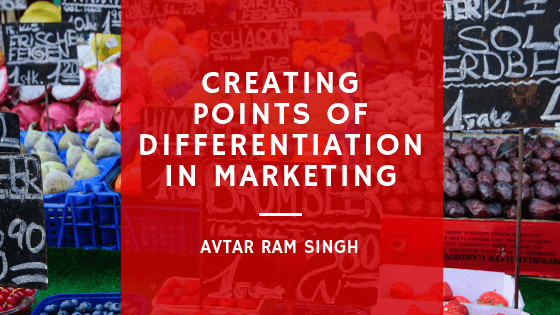
By Avtar Ram Singh, {grow} Contributing Columnist
Every entrepreneur is told that when they think about starting a company, they need to find a strong USP, or unique selling proposition.
Your USP is a factor that differentiates you from your competition, and gives a prospective buyer a key point of differentiation that prompts or deters them from doing business with you.
A strong, defensible USP is the key to a company doing well or going bust. Facebook’s USP is being the world’s largest social network. If another company popped up in 2020 and 3 billion people signed up for it, Facebook would be in deep trouble.
My neighbourhood grocer in my hometown knew everyone’s names that shopped with him, their personal preferences and kept track of things they said they liked and didn’t like. That was his USP. Someone more personable opening up a grocery store next to his would have spelled out trouble.
But big box stores took care of that. I digress.
If you look at advertising in most categories today, it comes across as being incredibly similar. Companies with e-commerce capabilities often fall into this trap when doing digital advertising. You can barely tell one apart from the other. So how do you truly build differentiation in your marketing?
What does the company stand for?
Differentiation in marketing is often successful when it follows the company’s product or service differentiation rules. If you’re selling holiday packages in Europe, and your USP is you have entire cottages to rent in the countryside and no other company does, then you build your marketing collateral and messaging around that. But you don’t just stop at “cottages in the European countryside”.
What are you truly selling? It’s a unique experience. One that large booking websites and portals can’t offer because they’re too busy selling people hotel rooms for $10 cheaper than their competition. You’re selling intimacy. Disconnecting from the world. A getaway. A change in scenery. A reset. Those then become the pillars of your marketing.
Find a Visual Identity
It can be very easy to be inspired by what a successful competitor is doing and try to emulate them in order to get the dreaded “quick win”. The unfortunate thing is, in most cases – trying to emulate your competition visually has two prominent effects.
- The first, is that because your content visually looks so similar to that of your competition, at a quick glance in the social feed, consumers will think they’re seeing content from… your competition.
- The second, is that consumers will think you’re trying to be like the competition. No one wants to associate themselves with the pretender, they all want the original.
Find a visual style that is truly yours. In fact, go beyond the competition. Look at how most brands market themselves, what kind of shots they use, what visual elements they incorporate into their marketing collateral, and try and come up with something that is truly you.
Think of it this way, in six months time if someone glances at a visual, they must immediately recognize it as your brand’s marketing. What should that visual look like?
Zig when the competition Zags.
There’s nothing that says, “I’m part of the crowd” more than doing exactly what the entire category does during certain times of the year. When Black Friday rolled around this year, almost every single e-commerce company I’ve bought something from sent me an e-mail shouting about their Black Friday discounts.
It’s no wonder that e-commerce companies find it exceptionally hard to create brand loyalty, because the only point of differentiation they have is a lower price, and no e-commerce company out there has the lowest price on every single product across every single category.
During Black Friday in 2013, Cards Against Humanity actually raised their prices as a stunt. It actually ended up in a sales increase, because fans loved the brand being cheeky and not taking themselves too seriously – which is exactly the kind of brand they are.
So the next time you see your entire category doing something, instead of jumping on the bandwagon, ask yourself how you you can turn this into an opportunity to further differentiate and build your brand.
Make the differentiation seep through every touchpoint.
It’s incredibly easy to make yourself distinct on social media, and on web banners. But what about your website? What about your customer service? What about your e-mail marketing? How about when peole message you on Facebook? When they pick up the phone and call? Walk into your store?
That’s when the magic truly happens.
When people see a brand differentiating itself on social media (or elsewhere), they don’t just think, “Oh, Brand X can take a joke and are light-hearted on Facebook / Twitter”, they think, “Oh, Brand X can take a joke and are light-hearted!”
So when they send you an e-mail about a poor product experience and they get an auto-response that looks like it was typed out by HAL 9000, your brand suffers. Their understanding of who you want to be and are portraying yourself to be suffers.
It’s not going to happen overnight.
Building differentiation takes time. Depending on what category you operate in, it might take six months, or it might take six years.
It might seem daunting to embark on this task, not knowing how long it will take, or when it has occurred. After all, the overpopulation of brand advertising all over the internet might make you wonder if consumers will even notice.
But they will. If you try, and you try hard enough and long enough, trust me – people will notice. In a sea of sameness, it’s easy to stand out. And in an ever-increasing sea, where most brands add more of the same stuff, it’s never been easier to stand out.